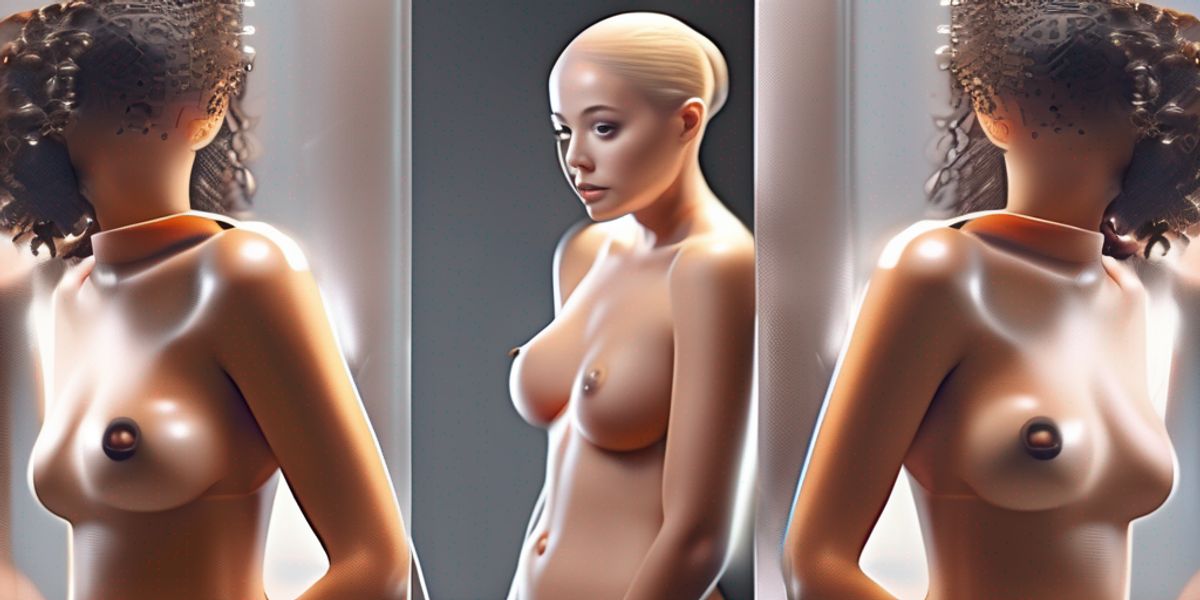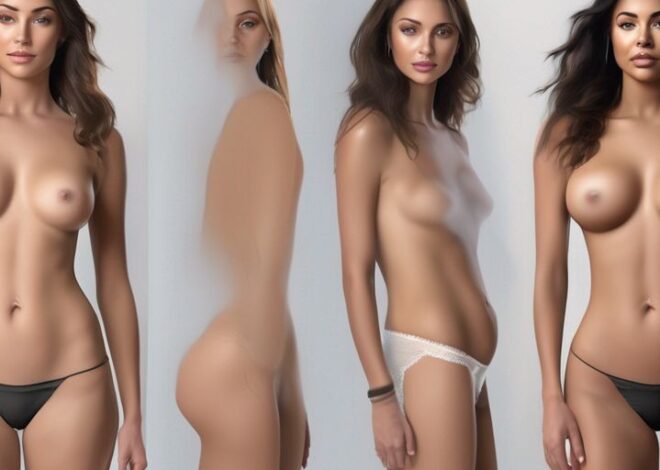
Exploring the Ethical Boundaries of AI Undressers
Exploring the Ethical Boundaries of AI Undressers delves into the complex interplay between technology, ethics, and society as it relates to AI technologies designed to digitally remove clothing from images. This article examines the functionality of such technologies, the ethical debates they spark, the legal landscape, and their broader social implications. The discussion extends to the safeguards necessary to prevent misuse and the future trajectory of these controversial tools.
Key Takeaways
- AI undressers, like Nudify.Online, utilize advanced algorithms to digitally remove clothing from images, raising significant ethical concerns.
- The primary ethical considerations include issues of privacy, consent, and the potential for misuse and abuse of the technology.
- Legal frameworks currently lag behind technological advancements, necessitating urgent updates to adequately address the use of AI undressers.
- AI undressers influence social norms and perceptions, particularly concerning body image and privacy.
- Technological safeguards and responsible development are crucial to mitigate risks and ensure ethical use of AI undressers.
Understanding AI Undressers: Technology and Functionality

How AI Undressers Work
AI undressers utilize complex algorithms to analyze and interpret images, effectively removing clothing from digital representations of individuals. This technology leverages deep learning and neural networks to distinguish between clothing and the human body, often requiring substantial computational power and data input to achieve realistic results.
Technological Advancements in AI Undressing
Recent years have seen significant advancements in AI undressing technology. For instance, Nudify.Online, a leading platform in 2024, uses the most advanced clothes-removing AI technology to operate. These improvements have enhanced the accuracy and speed of these applications, making them more accessible and efficient.
Applications of AI Undressers
AI undressers are employed in various fields, ranging from fashion and retail to security and forensic analysis. They can be used to:
- Virtually try on clothes for online shopping.
- Assist in criminal investigations by enhancing images.
- Create personalized avatars for gaming and social media.
AI undressers, while innovative, pose significant ethical and privacy concerns that must be addressed to prevent misuse.
Ethical Considerations of AI Undressers

Privacy Concerns
The use of AI undressers like Nudify.Online raises significant privacy concerns, as these tools can manipulate personal images without the subject’s consent. The potential for misuse is high, particularly when considering the unauthorized distribution of altered images.
Consent and AI
Consent is a fundamental issue in the deployment of AI undressers. Users of such technologies must be fully informed and voluntarily agree to the processing of their images. This involves clear communication about how the AI works and the extent of its capabilities.
Potential Misuse and Abuse
The misuse of AI undressers can lead to serious ethical and social consequences. Here are some potential abuses:
- Creation of non-consensual explicit content
- Blackmail or harassment
- Damage to personal and professional reputations
It is crucial to establish stringent regulations and ethical guidelines to prevent these abuses and protect individuals.
Legal Framework Surrounding AI Undressers

Current Laws and Regulations
The legal landscape for AI undressers is complex and varies significantly across different jurisdictions. In many countries, existing laws do not directly address the unique challenges posed by AI undressers, leading to a legal gray area. Key legislation often revolves around privacy and data protection laws, which may indirectly govern the use of such technologies.
International Perspectives on AI Undressing
Different countries have adopted varying stances on AI undressing technologies. For instance, the European Union emphasizes strict data protection with its GDPR, while other regions might have less stringent regulations. This disparity necessitates a nuanced understanding of international law to navigate the legalities of deploying AI undressers globally.
The Need for Updated Legislation
As technology advances, the gap between current laws and the capabilities of AI undressers widens. There is a pressing need for updated legislation that specifically addresses the ethical and privacy concerns associated with these technologies. Stakeholders, including lawmakers, tech companies, and civil society, must collaborate to ensure that the development and use of AI undressers are governed by robust legal frameworks that protect individual rights.
Social Implications of AI Undressers

Impact on Social Norms
The integration of AI undressers into society challenges existing social norms and raises questions about the boundaries of privacy and decency. The normalization of such technologies could desensitize the public to invasive technologies, potentially leading to a redefinition of personal boundaries.
Public Perception and Acceptance
Public opinion on AI undressers is deeply divided. Some view it as a technological advancement, while others see it as a threat to personal privacy. The controversy surrounding applications like Nudify.Online highlights the need for clear communication and ethical guidelines to shape public perception positively.
Influence on Body Image
AI undressers could significantly impact body image issues, by promoting unrealistic standards or altering perceptions of the human body. This technology might contribute to increased body scrutiny and potentially exacerbate health issues related to body image dissatisfaction.
Technological Safeguards Against Misuse

Built-in Safety Features
Modern AI undressers incorporate advanced safety features to prevent misuse. These include user authentication protocols, watermarking of images to trace origin, and automatic detection of non-consensual content. Ensuring that these tools are robust is crucial for maintaining user trust and ethical standards.
Role of Developers in Ensuring Ethical Use
Developers play a pivotal role in the ethical deployment of AI technologies. By integrating strict ethical guidelines and conducting regular audits, developers can mitigate risks associated with AI undressers. It’s essential for tech companies to take proactive measures, such as blocking keywords associated with undressing apps, to prevent abuse.
Future Technologies to Enhance Security
The ongoing development of AI technologies promises more secure and ethical applications in the future. Predictive analytics and machine learning models are being refined to better detect and prevent potential misuse before it occurs. This proactive approach is vital for the sustainable development of AI undressers.
Case Studies: The Use and Misuse of AI Undressers

Positive Applications in Various Industries
AI undressers have found legitimate applications in fields such as fashion and healthcare. For instance, they assist in virtual try-ons for online shopping, enhancing the consumer experience and reducing return rates. In medical settings, they help in visualizing skin conditions without physical undressing, preserving patient dignity.
Notable Misuses and Their Consequences
The misuse of AI undressers has led to significant ethical and legal challenges. One notable incident involved the creation of illicit images at a middle school, where students used AI to generate nude images of peers, sparking legal and ethical debates. This highlights the urgent need for stringent controls and ethical guidelines in the deployment of such technologies.
Learning from Past Incidents
The industry can learn from past misuses to improve safety and ethical standards. Implementing robust verification processes to ensure the technology is used responsibly is crucial. Future technologies should focus on enhancing security features to prevent misuse, ensuring AI undressers are used in ways that respect privacy and consent.
The Future of AI Undressers

Predictions and Trends
The trajectory of AI undressers is poised for significant evolution. As technology advances, these tools are expected to become more sophisticated and widespread. Predictive analytics and machine learning will likely play a crucial role in enhancing the capabilities of AI undressers, making them faster and more accurate.
Ethical AI Development
The development of AI undressers must prioritize ethical considerations to prevent misuse. This involves integrating robust ethical guidelines and transparency in the development process to ensure that these technologies are used responsibly and with respect for privacy.
Balancing Innovation with Responsibility
The challenge lies in balancing technological innovation with ethical responsibility. Stakeholders must collaborate to establish standards and regulations that safeguard individual privacy while fostering innovation. This balance is crucial for the sustainable development of AI technologies that respect human rights and dignity.
Conclusion
As we navigate the complex landscape of AI technologies, the ethical boundaries of AI undressers like Nudify.Online demand rigorous scrutiny. The potential for misuse and the invasion of privacy highlight the urgent need for robust ethical guidelines and regulatory frameworks. It is imperative that developers, lawmakers, and the public engage in open dialogues to ensure these technologies are used responsibly, respecting individual rights and societal norms. The advancement of AI should not come at the cost of human dignity and privacy.
Frequently Asked Questions
What is an AI Undresser?
An AI Undresser, such as Nudify.Online, is a technology that uses advanced AI algorithms to digitally remove clothes from images of people. It is designed to create realistic representations of individuals without their clothes, purely based on the input image.
How does AI Undressing technology work?
AI Undressing technology employs machine learning models that have been trained on vast datasets of images to recognize and differentiate between clothing and human skin. The technology then digitally reconstructs the image by estimating what the person might look like without clothes.
Are there any ethical concerns associated with AI Undressers?
Yes, there are significant ethical concerns, including privacy violations, lack of consent from the individuals whose images are processed, and the potential for misuse in creating non-consensual imagery, which can lead to personal and societal harm.
What legal protections exist against misuse of AI Undressing technologies?
The legal framework varies by country, but many regions lack specific laws that regulate the use of AI to manipulate images in this manner. This often leaves a gap in protection against misuse, underlining the need for updated legislation to address these emerging technologies.
How can AI Undressers impact social norms and body image?
AI Undressers can contribute to unrealistic body standards and perceptions, as they create idealized and often altered images of human bodies. This can affect societal norms and individuals’ body image, possibly leading to psychological and social issues.
What measures can be implemented to ensure ethical use of AI Undressers?
Developers can implement built-in safety features, such as strict access controls and watermarking to indicate altered images. Additionally, there should be clear guidelines and regulations governing the ethical use of such technologies, including ensuring consent and protecting individual privacy.



